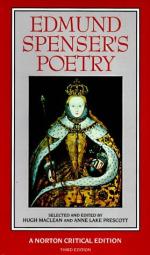|
This section contains 10,549 words (approx. 36 pages at 300 words per page) |

|
SOURCE: "Elizabeth, Her Poets, and The Creation of the Courtly Manner," in Elizabeth, Her Poets, and the Creation of the Courtly Manner: A Study of Sir John Harrington, Sir Philip Sidney, and John Lyly, Garland Publishing, Inc., 1988, pp. 1-43.
In the excerpt below, Fienberg discusses how the court poets (through verse) and Queen Elizabeth (through the rhetoric of her speeches) shaped their own public personas while exercising power and influence.
I.
The court's status as the center of cultural ambition and activity in the Renaissance expresses both the idealism and realism of the age. Many Renaissance writers depended upon the patronage of the court to secure financial, social, and political preferment. The court provided the setting poets needed in which to exercise their talents. These interests were frequently supplemented by the idealistic desire to show how learning and eloquence could serve the court. The humanist belief that learned...
|
This section contains 10,549 words (approx. 36 pages at 300 words per page) |

|


